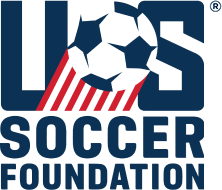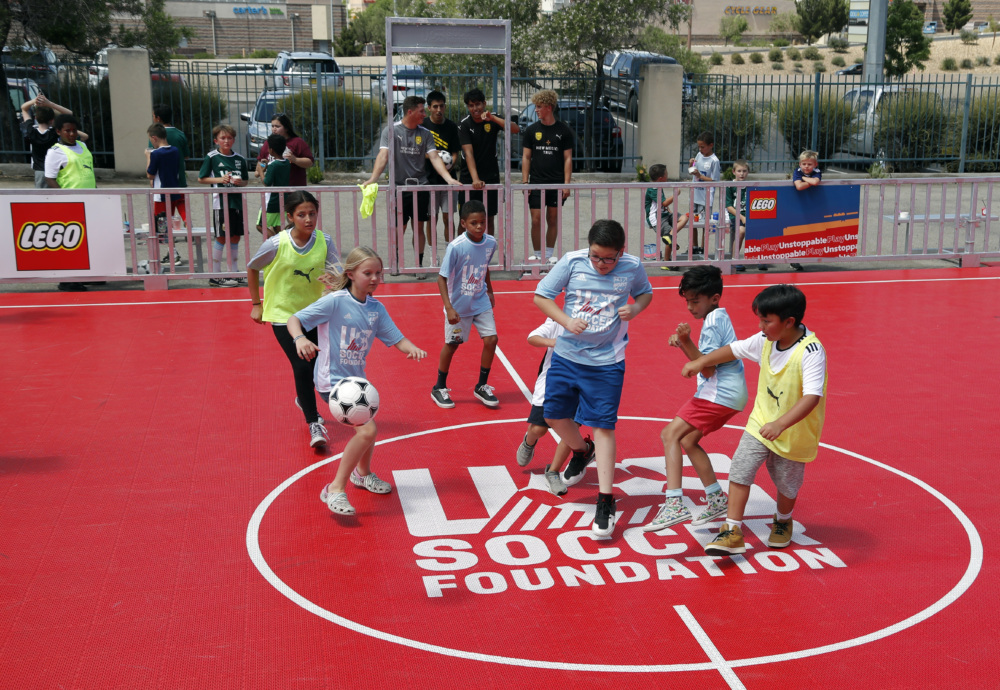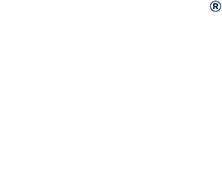

Let soccer do what soccer does.
Together, we can give millions of kids from underserved communities safe places to grow, thrive and build confidence for life.
It’s Everyone’s Game:
25 Years in the Making
Twenty-five years ago, with the excess proceeds from the ’94 World Cup and the vision of Founder Alan Rothenberg, the U.S. Soccer Foundation was born.
Since our inception, we’ve helped propel the tremendous growth of the game across the country—from the grassroots to the professional leagues. We did it by awarding grants to state associations, local youth soccer clubs, and national youth soccer organizations, like US Youth Soccer and AYSO. We supported the launch of Major League Soccer and professional women’s soccer leagues, including WUSA, WPS, and NWSL. In our 25 years, we’ve invested more than $125 million into the game on all levels and impacted more than 738,000 children.
Despite the phenomenal growth of soccer in the United States, we realized that not everyone had easy and affordable access to play. We shifted our focus to underserved communities—where there were many barriers to the sport. Through Soccer for Success, we’ve provided more children and families greater access to the game and safe places to play.
Our reach in underserved communities is growing fast. Last year alone we engaged 70,000 children in Soccer for Success—a 64% increase from the previous year. This year, we’re aiming for 100,000. We’ve secured funding for more than 330 of the 1,000 mini-pitches we aim to build by 2026. And we’ve already built and opened 160 of these mini-pitches that are being used by children and adults in underserved communities nationwide.
These numbers only tell part of the story. It’s the people behind the numbers who most inspire me. It’s the families and their children who tell us about the transformative change the program has had on their lives. It’s our coach-mentors who are using the game to prepare our next generation of leaders. It’s our partners who are building infrastructure to support play in underserved areas and using the sport to make community improvements that reach far beyond the soccer pitch.
Take the greater Philadelphia area, for example. This past year, three Soccer for Success program partners—who had been working independently in three separate communities—began pooling resources and sharing knowledge. The three programs now run joint Soccer for Success coach-mentor trainings and host large end-of-season jamborees. Together, they are making an even greater impact across the region and families and children from all three programs are gaining new perspectives, meeting new people, and forming a larger united urban soccer community. Soccer for Success is at the root of that bond.
In California, Soccer for Success is enabling the creation of meaningful partnerships from the health and education sectors to achieve collective impact. In San Joaquin and Stanislaus counties, a partnership with Sutter Health will allow 1,000 students to participate in the program this year. What’s unique about this partnership is that, beginning this spring, interns from the local health departments through the county offices of education will work with Soccer for Success sites to conduct health surveys. By measuring and tracking this data, our partners are able build critical support for the program among corporations and local government agencies because of participants’ positive health and youth development outcomes.
The greater Miami-Dade area is a great example of critical cross-sector support that has allowed the program to expand. Due to funding from local city governments, a health insurance provider, and local foundations, our Soccer for Success programs in Miami are now able to serve more children. A national corporation and local government agencies also funded the creation of four new safe places to play in communities of need across the region.
Recently in Tampa, local Target store team members, youth from the Boys & Girls Club, the Sheriff’s Office, and county officials hosted a community day to officially open a new mini-pitch. In addition to soccer scrimmages and activities, residents, volunteers, and families enjoyed healthy snacks from a pop-up farmer’s market and participated in fitness challenges in the areas surrounding the pitch.
Events like this one—that involve many local partners and offer an array of community activities—are occurring across the country. Local Target store team members host a community events on many of the new play spaces created nationwide. Major League Soccer and its MLS clubs often bring players and their street teams to offer a host of activations when mini-pitches open in their cities. MLS clubs also host clinics for local children.
In July, adidas team members in Los Angeles helped install a new mini-pitch in Watts and painted murals around the pitch as part of a greater restoration of the community center. Musco Lighting recently unveiled a new mini-pitch system, complete with lighting, fencing, and goals, that will not only expand the hours of play the pitches can be used, but that also provides communities with the ability to customize artwork and other components of the pitch.
It’s exciting to see more children and families who now have access to the game. But it’s even more incredible to see how each community puts its own spin on Soccer for Success and develops innovative ways for both the program and mini-pitches to bring people together.
That’s what is special about this movement. It looks different in every community because each community is different. Each community is using the beautiful game—and the real difference it makes in people’s lives—to best meet its needs. And that is what is driving the momentum on the national level.
As I take a moment to reflect on the past 25 years, I’m in awe of all the progress that has been made. I’m grateful for everyone who has helped us increase participation, improve lives, and strengthen communities through the game we all love.
We have accomplished a lot together. But we aren’t done yet. When we set our goals to engage 1 million children and build 1,000 new safe places to play, we made a commitment to communities where the need is greatest. We said we’d strive to create a future in which every child has the opportunity to play the game—no matter where he or she lives. We vowed to make soccer everyone’s game.
Until we reach those goals, there is still work to do.
Join us at itseveryonesgame.org.

